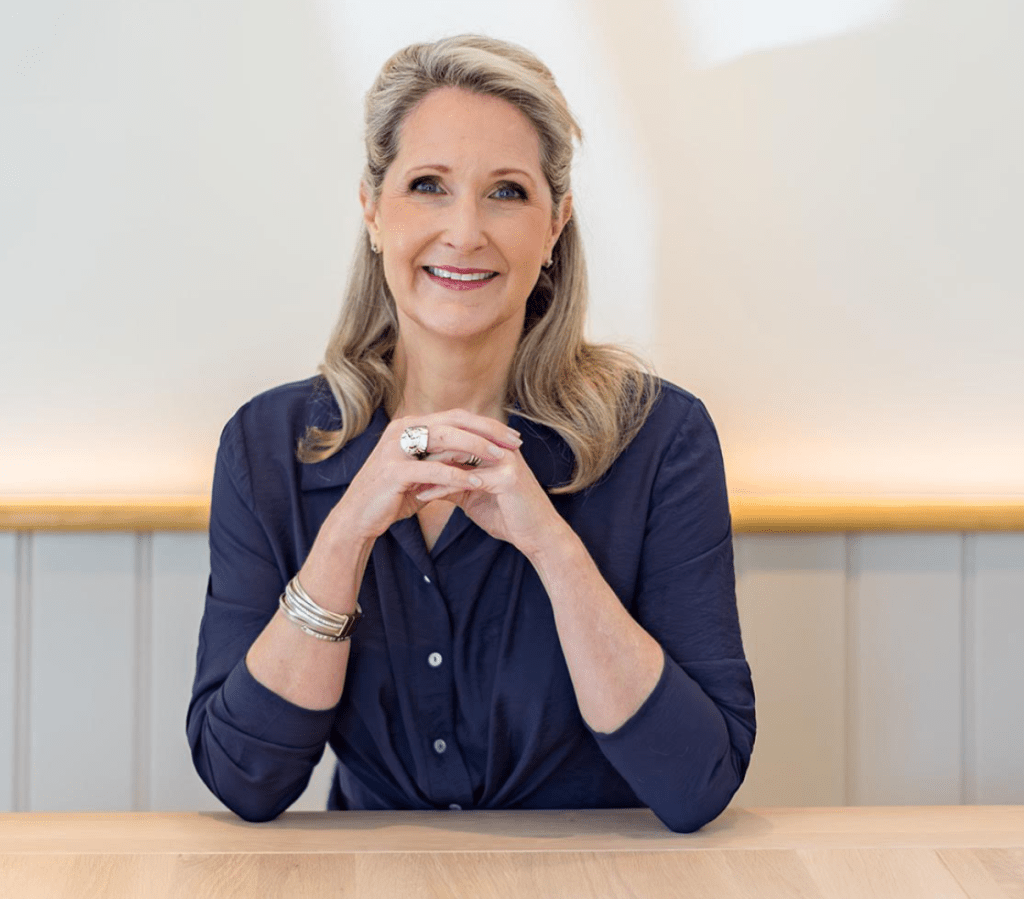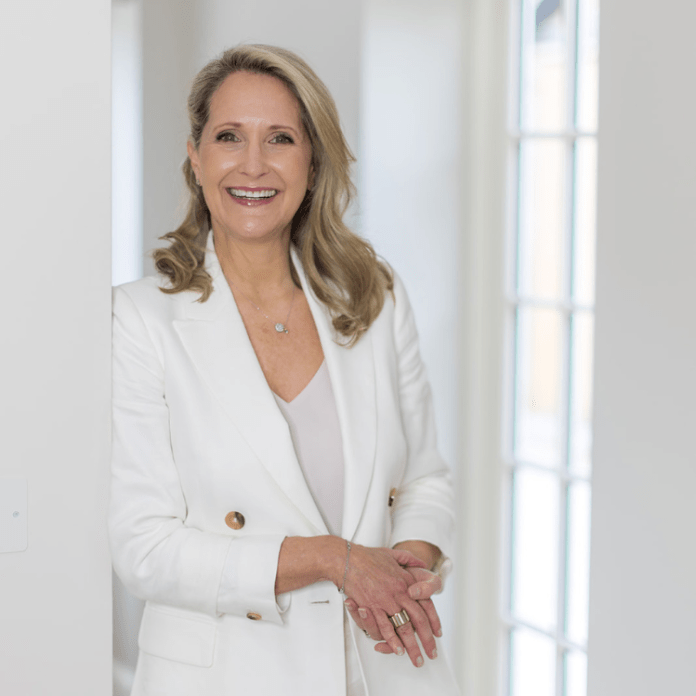In a world obsessed with performance, data, and productivity, Kerry-Lyn Stanton-Downes is urging leaders to look somewhere far more human the space between us. In her forthcoming book Beyond Words, she challenges the dominant narrative of a “mental health crisis,” arguing that what we’re truly facing is a relational poverty epidemic. Drawing on two decades of work with leaders and teams across industries, Kerry-Lyn reveals how disconnection — not disorder — lies at the heart of burnout, anxiety, and disengagement. Her message is clear: when we rebuild connection, we rebuild wellbeing, creativity, and collective success.
“It’s not a mental health crisis — it’s a crisis of connection.”

Your book Beyond Words challenges the idea that we’re facing a mental health crisis, suggesting instead that we’re in a “relational poverty epidemic.” What first led you to see the problem through that lens?
When I first began working with leaders and teams, I noticed something striking: the people struggling most weren’t necessarily those with poor mental health – they were people living and working in disconnection. Over time, I realised we didn’t have just a mental health crisis; we have a relational one.
We’ve built systems that prioritise performance, efficiency, and data, but neglect the very thing that keeps humans healthy and engaged – the quality of the space between them. When people operate in chronic survival mode, their nervous systems stay on high alert. That state erodes empathy, curiosity, and collaboration, leading to burnout, loneliness and fragmentation.
So, I began reframing the question. Instead of asking ‘what’s wrong with people?’ I started asking ‘what’s happening between people?’ Once we do that, everything shifts. Healing, creativity, our ability to navigate different and wellbeing all emerge naturally when safety and connection return – and that’s where success begins.
You describe “relational capacity” as being at the heart of healthy teams and organisations. For those new to the concept, how would you explain what relational capacity means in everyday leadership?
At its simplest, relational capacity is our ability to stay connected – to ourselves, to others, and to the space we co-create and share – especially when things get hard.
In leadership, it’s what allows you to hold complexity without collapsing into reactivity. It’s the difference between a manager who listens defensively and a leader who hears to understand. When relational capacity is high, trust grows faster, conversations are more honest and grounded, and people feel safe enough to take creative risks.
When relational capacity is low – when people are in survival mode – I see defensiveness, blame, burnout, stress and anxiety take over. That’s why I see relational capacity as the foundation of everything else: psychological safety, innovation, performance, collaboration. You can have the best strategy in the world, but if your relationships can’t hold difference, challenge or name emotions, the individual, team and the entire system cannot thrive.
Building relational capacity isn’t a ‘soft skill’. It’s a measurable, teachable skill and, it’s what transforms teams from struggling just to survive to flourishing and success.
In a world driven by data, performance and technology, why do you think genuine human connection has become so rare—and so difficult to rebuild?
We’ve built a world that rewards output more than presence and connection.
Data tells us what has happened and helps us predict what might come next. It allows us to move faster and gives us access to more information than at any point in history. But it cannot capture the felt experience of belonging, purpose, curiosity, failure, reflection or collaboration – the things that make us human.
And while technology can link us to one another faster than ever before, it often does so without the psychological safety or depth we need to truly feel connected – to satiate the social engagement system that lets us experience being seen, understood and known.
Add to that the relentless pace of change – AI, hybrid working, uncertainty – and many leaders and teams are now living in subtle survival mode and ‘on’ all the time. When our nervous system feels unsafe, we disconnect. We stop hearing each other, protect instead of relate, and start confusing information exchange with human connection.
Rebuilding connection begins by remembering that relationships are physiological, not just psychological. When we regulate our own systems and show up with presence rather than performance, the space between us changes. That’s where trust returns – and where collaboration, wellbeing and innovation start to rebuild.
You’ve worked with leaders across finance, tech and NGOs. What are some of the most common relational breakdowns you see at the executive level, and how do they impact team wellbeing?
No matter the business, relational breakdowns rarely start with conflict – they start with disconnection. Often, leaders become so focused on outcomes they stop paying attention to the quality of the way they and their teams relate while they drive towards those outcomes.
One of the most common patterns I see is what I call relational drift – when pressure, pace and performance targets quietly erode psychological safety, trust and true collaboration. Conversations become transactional, real curiosity disappears, and people stop saying what they really think and need. Over time, that creates a culture of polite avoidance and disconnection. It looks functional from the outside, while inside there’s anxiety, burnout and disconnection.
Another very common breakdown happens when leaders lose access to empathy, curiosity, reflection and presence while under pressure. Neuroscience tells us that when we are in survival mode, our brain narrows its focus to protection – not connection. That’s when communication hardens and collaboration breaks down.
The most challenging aspect of all of this is the impact – which is significant. When leaders cannot regulate or relate, the whole system absorbs the tension. When leaders choose to build relational wealth – through the 8 Principles of Relational Capacity – then you have a resilient, agile, collaborative, business that can navigate difference and stay connected to what they are here to do and why.

Your book argues that wellbeing initiatives often miss the real issue. How can leaders move beyond surface-level interventions to create true psychological safety?
In my experience, a lot of wellbeing initiatives treat the symptom – stress, burnout, anxiety, depression, disengagement – and overlook what’s driving them: the relational poverty that exists as a result of the way people relate to one another.
You can offer mindfulness apps or yoga classes, but if people don’t feel safe to speak openly in meetings, or if leaders cannot regulate their own nervous systems under pressure, and show up to co-regulate, culture doesn’t change. Psychological safety isn’t built by policy it’s built in every moment, in every interaction – in how we hear each other, how feedback is given and received and in how we navigate difference.
True wellbeing begins when leaders see safety as a shared state, not an individual achievement. That’s where relational capacity becomes powerful. When leaders stay connected under pressure, are genuinely curious about the person and the problem, they begin to regulate the whole system.
So, the real work isn’t adding more programs – it’s learning to lead differently. When connection becomes part of how business is carried out, wellbeing stops being an initiative and becomes the natural outcome of the quality of the way people relate.
You’ve spent more than two decades helping people and organisations heal through connection. Can you share a powerful moment in your work that reaffirmed your belief in the “space between” as a catalyst for change?
There are so many, but one moment stays with me. I was working with a senior leadership team where two members hadn’t spoken properly in over a year. Their tension had become the unspoken truth everyone worked around.
Rather than trying to ‘fix’ it, I invited the team to slow down, to breathe, to notice what was happening in the space between them – not just within themselves. At first there was silence, then emotion, then honesty. What surfaced wasn’t disagreement about strategy, it was unacknowledged fear, unvalidated narratives about what was happening between them and disconnection.
When it was finally named, the entire room shifted. You could almost feel the collective exhale – that moment when defenses give way to connection.
It reminded me that transformation rarely happens through clever words but through a shared language and framework that provides a safe way to explore what is happening for you, me and in the relational space. Because that is where relational repair, creativity, trust and resilience are born.
Having trained in Transpersonal Psychotherapy, Imago Therapy, and Coherence Therapy, how have these different modalities shaped your approach to leadership and organisational transformation?
What connects all the modalities is a simple but profound truth – the brain is a relational organ, and we are relational by nature. Each discipline gave me a different piece of the puzzle in how to translate that into something actionable and tangible.
Let me give you some examples. Transpersonal psychotherapy helped me understand leadership isn’t just a cognitive or behavioural practice – it’s relational. It’s about connecting to meaning, purpose and one another beyond the limits of the self.
Imago therapy revealed that every relationship is a living system needing repair. When we feel unseen or unsafe, we move into protection; when we feel heard and valued, we move towards connection and collaboration. It showed me how essential psychological safety is for transformation – in any context.
Coherence therapy grounded these insights in neuroscience. It demonstrated that sustainable change happens only when emotional learning is updated in the brain – that’s what we call memory reconsolidation. When old defensive patterns dissolve, coherence is restored, and new ways of relating can finally take hold.
So, together these approaches shaped the language and framework I now call the Relational Wealth Strategy – a way for leaders and teams to pay attention to the quality of the way they relate, and to move individually and collectively from survival to safety to success.
Growing up in a culture shaped by survival, you’ve spoken about learning to find safety in connection. How has your personal journey influenced your mission to bring relational awareness into the business world?
For much of my early life, survival was the norm – not as a concept, but as a lived experience. Like many people, I learned to succeed by staying alert, reading the room, and anticipating what was expected of me. Those strategies served me for a time, but they also came at a cost: disconnection – not just from my own needs, but from those around me because I was always poised for what might go wrong.
It wasn’t until I began to understand safety as something that exists between people, not just within me, that things began to change. The more I experienced co-regulation – feeling grounded through genuine connection – the more I recognised how central it is to every human system, including business.
That realisation became the heart of my work. I wanted to help leaders and organisation move beyond survival cultures – built on control, fear and individualism – into environments that foster safety, collaboration, and shared success. Because when we learn to relate differently, we lead differently. And that changes everything.
As you prepare to publish Beyond Words in 2026, what do you hope leaders will take away from it—and how do you see it changing conversations about leadership and wellbeing globally?
My deepest hope is that Beyond Words helps leaders, and aspiring leaders, realise success isn’t built on ideas, plans, policies and procedures alone – it’s built on the quality of the way we relate as we engage with the ideas, build and action the plan.
We talk a lot about mental health, performance and culture, but rarely about the relational infrastructure that holds them together. I want leaders to see that when people feel seen, safe and valued, performance becomes a by-product rather than a target.
If we can move organisations from survival – safety – success, we can replace fear with trust, control with courage, and isolation with collaboration. That shift doesn’t just improve wellbeing, it changes the way businesses innovate, communicate and grow.
So, my hope is that Beyond Words starts a global conversation about leadership that’s less about what we achieve and more about how we achieve it – through presence, connection and genuine curiosity. I believe, the future of leadership won’t be defined by who shouts the loudest, rather by who leads relationally.
“Success lives in the space between us.”
Finally, if you could leave readers with one message about thriving in today’s uncertain world, what would it be?
Thriving in uncertainty isn’t about doing more, it’s about being more present and relational.
When life or leadership feels unpredictable, our instinct is to tighten control. But what truly grounds us is connection – to ourselves, to others, and to what matters most. When we learn to regulate rather than react, to hear rather than defend, and to stay curious rather than certain, we create safety not just within ourselves, but between each other.
And that’s where possibility, and hope, lives.
Because no matter how fast the world moves or how complex it becomes, the constant is this: what happens between us matters most. It always has – and it always will.















